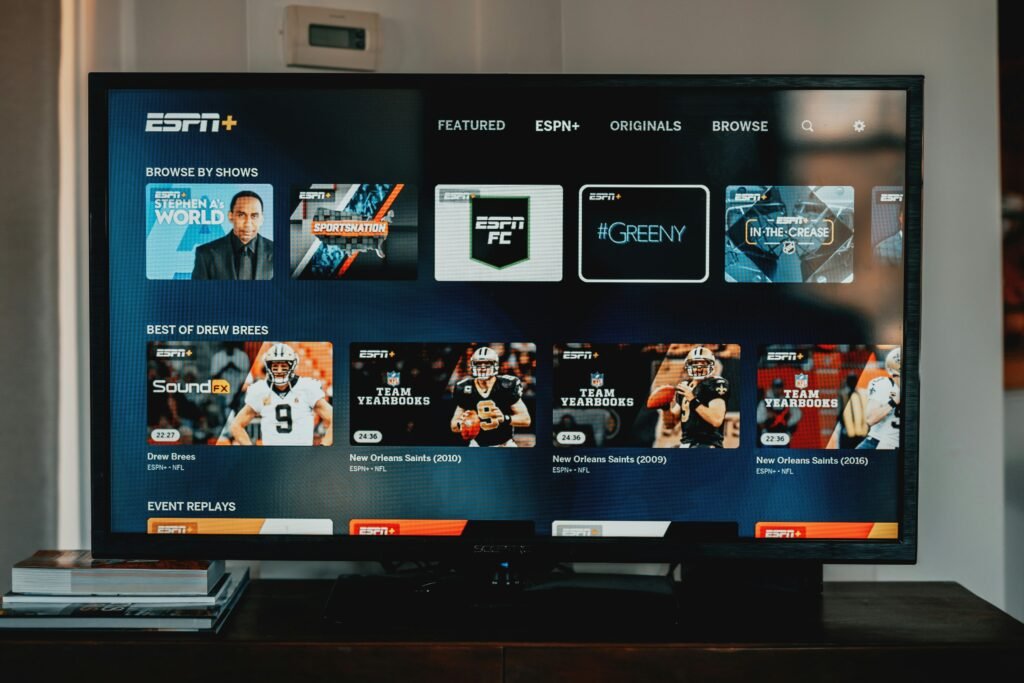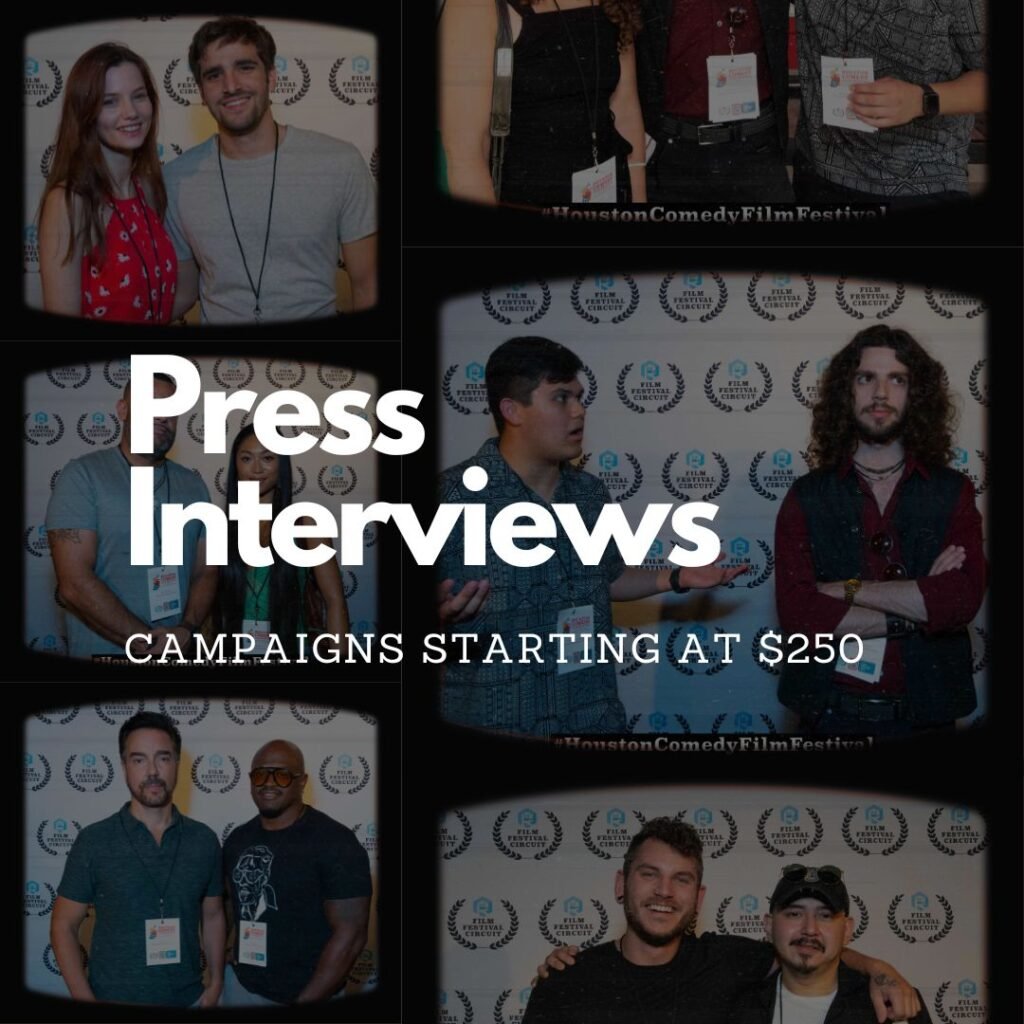Advice
Olympic Strategies for Small Business Success
As a small business owner without a support network, you can draw inspiration from Olympic athletes’ dedication and apply their strategies to your business. Let’s explore how you can implement crucial elements of training and persistence into your daily routine, backed by compelling data from both the Olympics and the business world.
The Power of Persistence: Going for Gold in Business
Olympic athletes train for years, often overcoming significant challenges, to compete for just a few minutes. This level of persistence is directly applicable to business success. According to the U.S. Bureau of Labor Statistics, about 20% of small businesses fail in their first year, and 50% fail within five years. However, those that persist beyond this point have a much higher chance of long-term success.
Daily Habit: Set and Review Goals
Olympic athletes set clear, measurable goals for their training and performance. Apply this to your business by setting and reviewing your goals daily. A study by Dr. Gail Matthews, conducted at Dominican University, found that people who wrote down their goals, shared them with others, and provided weekly progress updates were 33% more likely to achieve them than those who merely thought about their goals.
Action Step: Create a goal journal. Spend 10 minutes each morning writing down your daily objectives and how they align with your larger business goals, just as an Olympian might track their training progress.
Continuous Training: Staying Ahead of the Competition
Olympic athletes never stop training, even after winning gold. In business, continuous learning is equally essential. A survey by Middlesex University for Work Based Learning found that 74% of workers feel they aren’t achieving their full potential due to lack of development opportunities.
Daily Habit: Dedicate Time to Learning**
Allocate at least 30 minutes each day to learning something new related to your business. This could be through online courses, industry publications, or podcasts.
Action Step: Create a learning schedule inspired by Olympic training regimens. For instance, Mondays for financial literacy, Tuesdays for marketing strategies, and so on.
Data-Driven Decision Making: The Olympic Approach
Olympic coaches use data to fine-tune athletes’ performances. Similarly, incorporating data into your daily habits can significantly improve your business outcomes. A study by the MIT Center for Digital Business found that organizations driven most by data-based decision making had 4% higher productivity rates and 6% higher profits.
Daily Habit: Review Key Metrics
Spend 15 minutes each day reviewing your key performance indicators (KPIs), much like an Olympic athlete might review their performance stats.
Action Step: Identify 3-5 crucial metrics for your business (e.g., daily sales, customer acquisition cost, website traffic) and create a simple dashboard to track them.
Building Resilience Through Networking: The Olympic Village Mindset
The Olympic Village fosters connections between athletes from different countries. While you may feel alone as a small business owner, building a network can provide crucial support. A study published in the Journal of Business Venturing found that entrepreneurs with larger and more diverse networks were more likely to persist through challenges and achieve business success.
Daily Habit: Network Virtually
Dedicate 20 minutes daily to online networking. This could be through LinkedIn, industry forums, or virtual meetups.
Action Step: Set a goal to make one new meaningful connection each week, inspired by the international connections made at the Olympics.
The Impact of Consistent Marketing: Your Business Marathon
Olympic marketing campaigns are consistent and far-reaching. For small businesses, consistent marketing efforts are equally crucial. According to a study by Constant Contact 68% of small businesses that engage in consistent marketing efforts see positive returns within 6 months.
Daily Habit: Marketing Outreach
Spend 30 minutes each day on marketing activities, whether it’s social media posting, email marketing, or content creation.
Action Step: Create a content calendar to plan your marketing efforts in advance, much like how Olympic organizers plan their marketing campaigns years in advance.
Financial Literacy and Cash Flow Management: Budgeting for Gold
Olympic committees must manage massive budgets effectively. Similarly, poor financial management is a leading cause of small business failure. A U.S. Bank study found that 82% of businesses fail due to cash flow problems.
Daily Habit: Financial Review
Take 15 minutes each day to review your cash flow and financial position, much like how Olympic organizers might review their budgets daily during the Games.
Action Step: Create a simple spreadsheet to track daily income and expenses.
Conclusion: The Compound Effect of Daily Habits
Remember, success in small business, like Olympic success, is often the result of consistent, small actions compounded over time. A study in the European Journal of Social Psychology found that it takes an average of 66 days for a new behavior to become automatic.
By incorporating these Olympic-inspired daily habits of persistence and training into your routine, you’re not just working in your business, but on your business. This approach, backed by data and research, can significantly increase your chances of long-term success, even without an extensive support network.
Stay committed to these practices, and you’ll likely find yourself among the 50% of businesses that survive beyond the crucial five-year mark, setting the stage for sustainable growth and success. Just as Olympians train for years for their moment of glory, your daily habits are preparing you for your business’s gold medal moment.
Stay Connected
Unlock impactful advertising opportunities with Bolanle Media. Our expert team crafts immersive experiences that captivate audiences, driving brand engagement and memorability. Let’s elevate your brand’s marketing strategy together.
Advice
How AI Is Forcing Everyone Into the Entrepreneur Game

Remember when having an ordinary job felt safe? Those days are over. The arrival of artificial intelligence isn’t just automating tasks—it’s blowing up the very idea of job security and ushering in an era where adaptability and entrepreneurship aren’t optional, they’re survival skills. Welcome to the new game. Average is automated, and now, everyone needs to think—and act—like an entrepreneur.

AI Isn’t Coming—It’s Already Here (And It’s Taking Jobs)
It’s not sci-fi anymore. By 2025, AI and automation are expected to displace as many as 85 million jobs worldwide, from customer service roles to entry-level tech positions, with 13.7% of U.S. workers already reporting being replaced by robots or AI-driven systems. Young people are especially hard-hit: tech unemployment among 20- to 30-year-olds has jumped 3% this year alone in AI-exposed roles. And the impact isn’t slowing down. Analysts say up to 60% of jobs in advanced economies could see tasks automated in the near future, with 30% of workers fearing outright replacement.
Why Average Isn’t Enough Anymore
The old industrial world ran on “the bell curve”—reliably rewarding the middle. If you were competent, you were comfortable. But in the digital age, AI is programmed to do average things perfectly and instantly. Now, the top 10%—the specialists, the creators, the difference-makers—snap up 90% of the rewards, while the rest get left behind.

Enter: The Entrepreneur Game
Here’s the twist: being entrepreneurial isn’t just about starting a business. It’s about building a personal brand, mastering a specialty, and continually learning or creating something valuable that AI can’t easily duplicate. Tech isn’t killing opportunity—it’s changing what it looks like.
- 20 million Americans now expect to retrain for new, more creative or tech-forward careers in the next three years.
- The fastest-growing “jobs” are digital and entrepreneurial: creators, consultants, coaches, prompt engineers, content strategists, AI-human collaboration experts, and niche community builders.
- Nearly half of companies that adopted AI are now automating roles, but they’re also creating demand for new skills and products almost overnight—a perfect playground for entrepreneurial thinking.
Survival Guide: How to Play (and Win) the New Game
- Pick Your Niche: Get laser-specific. Being “good at business” is out. Being the best at “helping consultants automate YouTube marketing with AI tools” is in—and global.
- Build Digital Assets: Write, film, code, design, research—create things that can scale, sell, and build your brand, wherever you are.
- Stay Adaptable: Reskill, upskill, and don’t be afraid to jump into new industries. Today’s winners are the ones who can pivot quickly and ride the next wave, not cling to what worked last year.
- Own Your Audience: Whether it’s a newsletter following, a YouTube channel, or a private Slack group, your future depends on connecting with people who value what you do—AI can’t compete with real, human influence.

Bottom Line
AI didn’t just move the goalposts—it changed the field. Being “average” is now a risk, not a guarantee. The winners in this new economy aren’t waiting for work to come to them—they’re proactively creating, collaborating, and cashing in on the skills, products, and experiences AI can’t touch. The entrepreneur game isn’t just for founders anymore. Ready or not, it’s for everyone.
Advice
How to Make Your Indie Film Pay Off Without Losing Half to Distributors

Making an independent film is often a labor of love that can take years, countless hours, energy, and a significant financial investment. Yet, for many indie filmmakers, the hardest part is recouping that investment and making money once the film is finished. A common pitfall is losing a large portion of revenue—often half or more—to sales agents, distributors, and marketing expenses. However, with the right knowledge, strategy, and effort, indie filmmakers can maximize their film’s earnings without giving away so much control or profit.

Here is a comprehensive guide to keeping more of your film’s revenue and ensuring your film gets the audience and financial return it deserves.
Understanding the Distribution Landscape
Most indie filmmakers traditionally rely on sales agents and distributors to get their films to audiences. Sales agents typically take 15-20%, and distributors can take another 20-35%, easily cutting your revenue share by half right from the start. Additionally, marketing costs that may be deducted can range from a few thousand to upwards of $15,000, further eating into profits. The accounting is often opaque, making it difficult to know how much you truly earned.
Distributors nowadays tend to focus on worldwide rights deals and use aggregators to place films on streaming platforms like Amazon, Apple TV, and Tubi. These deals often do not fetch the best revenue for most indie filmmakers. Many distributors also do limited outreach, reaching only a small number of potential buyers, which can limit the sales opportunities for your film.
Becoming Your Own Sales Agent
One of the most important shifts indie filmmakers must make today is to become their own sales agents. Instead of relying entirely on intermediaries, you should learn the art and business of distribution:
- Research and build an extensive list of distributors worldwide. Top filmmakers have compiled lists of hundreds of distributors by country and genre. Going wide increases your chances of multiple revenue deals.
- Send personalized pitches to hundreds of distributors, showcasing your finished film, cast details (including social media following), genre, logline, and trailer. Ask if they want to see the full feature.
- Don’t settle for a single distributor or a big-name company that may not prioritize your film. Instead, aim for multiple minimum guarantees (MGs) from niche distributors in individual territories like Germany, Japan, and the UK.
- Maintain transparent communication and track every outreach effort carefully.

Pitching and Marketing Tips
When pitching your film:
- Highlight key genre elements and target audience since distributors are often risk-averse and look for specific film types.
- Include social media metrics or fanbase counts, which can make your film more attractive.
- Provide a strong one-minute trailer and a concise logline.
- Be prepared for rejections; even a 5% positive response rate is success.
Marketing is also crucial and can’t be left solely to distributors. Understanding and managing your marketing efforts—or at least closely overseeing budgets and strategies—ensures your film stands out and reaches viewers directly.
Self-Distribution and Hybrid Models
If traditional distribution offers no appealing deals, self-distribution can be a viable option:
- Platforms like Vimeo On Demand, Amazon Prime Direct, and YouTube allow you to upload, price, and market your film directly to audiences while retaining full creative and revenue control.
- Aggregators like Filmhub and Quiver help place self-distributed films on multiple streaming services, often for a reasonable fee or revenue share.
- The hybrid distribution model combines some traditional distribution deals with self-distribution, maximizing revenue streams, audience reach, and control over your film’s destiny.
Takeaway: Be Proactive and Entrepreneurial
The indie filmmaking world is now as much about entrepreneurship as artistry. Knowing distribution essentials, taking ownership of your sales process, and actively marketing your film are no longer optional—they are key for financial success.
By investing time in outreach, exploring multiple territories, securing minimum guarantees, and considering hybrid or self-distribution approaches, indie filmmakers can keep more of their earnings, increase their film’s audience, and avoid being sidelined by opaque deals and slim returns.
The days of handing your film over to a distributor and hoping for the best are gone. The winning formula today is to be your own sales agent, marketer, and advocate—empowered to make your indie film pay off.
Advice
How to Absorb Books 3x Faster in 7 Days

Reading is one of the most powerful skills you can develop — but most people read far slower than they could, spend time on information that doesn’t matter, and then forget what they read a week later. The Triforce Method changes that. It’s a three-part strategy that helps you increase your reading speed, focus on the most important details, and actually remember and use what you’ve learned.

Strategy 1: Increase Your Baseline Reading Speed
The first step is to read faster — but not by rushing. Instead, you’ll train your brain and eyes to process information more efficiently.
1. Remove Your Internal Monologue
Most people “hear” the words in their head when reading. This subvocalization caps your speed to that of normal speech — about 200–250 words per minute. To double your speed, you need to see the words, not hear them.

Think about a stop sign — you don’t sound out “STOP” in your head; you just recognize it instantly. You can train this with tools like Spreeder (free, not sponsored), which flashes text at higher speeds and groups words together. This forces your brain to process visually rather than subvocally.
With practice, this feels natural — the author of this method went from 250 wpm to over 500 wpm in just a short time.
2. Use a Visual Tracker
Your eyes aren’t naturally smooth when moving across text — small jerks and backtracking slow you down. Try this:
- Look at your screen and move your eyes from left to right. Notice the small jitters.
- Now put your finger or a pen in front of you and track it smoothly. Immediately, your motion is more consistent.
A tracker (your finger, a pen, or even a cursor) keeps your eyes moving forward, prevents regression, and lets you maintain speed. Over time, increase your tracking speed. This alone can add another 100+ words per minute to your pace.

Strategy 2: Have a Reading Strategy
Speed means nothing if you waste time on unimportant details. The second step is knowing when to read fast and when to slow down — especially for non-fiction.
The 80/20 Rule
In most non-fiction books, 80% of the value comes from 20% of the content. The rest is often filler, examples, or repetition.
For example, in Atomic Habits, the core lessons are surrounded by stories and case studies. Using the Triforce Method:
- Read most sections quickly (internal monologue removed, visual tracker engaged).
- When you hit a “golden nugget” of advice, slow down, think about it, and absorb it.
The key here: adapt your speed based on content. Reading 700 wpm during a key concept will reduce comprehension — so drop to 500 wpm or less when it matters.
Avoid “highlighting every sentence” syndrome. Focus on what really moves the needle.
Strategy 3: Summarise and Consolidate
Reading faster and smarter means nothing if you immediately forget what you’ve read. The third pillar of the Triforce Method is about retention and application.
Summarising
After each page, summarise it in 1–2 sentences in your own words. Even “nothing important happened here” counts. This habit forces your brain to engage with the material and improves comprehension.
Consolidating
Especially for non-fiction, you must take action on what you read. Learning is about changing behavior, not just collecting ideas.
Example: After reading about habit tracking in Atomic Habits, actually start tracking your habits that day — don’t just file the advice away for “someday.” The author of this method even paused reading for 24 hours to implement changes before continuing.
If you don’t change anything after reading, you haven’t truly learned.

When to Use This Method
- Learning-focused reading: Non-fiction, textbooks, technical guides, exam prep — anytime speed, focus, and retention matter.
- Enjoyment reading: Fiction, poetry, or literature may not require all these techniques — unless you want to increase speed intentionally.
The Bottom Line
The Triforce Method combines:
- Speed – Removing subvocalization + using a visual tracker.
- Strategy – Applying the 80/20 rule and adapting your pace.
- Retention – Summarising and acting on what you read.
With consistent practice, you can double your reading speed, focus only on what matters, and actually remember and use the information.
If you’d like, I can also make a condensed, visually appealing infographic summarizing the three strategies in the Triforce Method so it’s easier to refer back to.
Do you want me to prepare that next?

 News4 weeks ago
News4 weeks agoDiddy Wakes Up to Knife in Prison Attack

 Business4 weeks ago
Business4 weeks agoHarvard Grads Jobless? How AI & Ghost Jobs Broke Hiring

 Entertainment2 weeks ago
Entertainment2 weeks agoAfter Party: Festival Winner for Best Romantic Short

 News1 week ago
News1 week agoCamp Wackapoo – Rise of Glog Takes Center Stage

 Entertainment1 week ago
Entertainment1 week agoFrancisco Ramos Takes Top Mockumentary Award at Houston Comedy Film Festival

 Politics2 weeks ago
Politics2 weeks agoMamdani’s Victory Triggers Nationwide Concern Over New York’s Future

 Politics2 weeks ago
Politics2 weeks agoTrump’s $2,000 Tariff Dividend Plan: Who Gets Paid?

 News1 week ago
News1 week ago50-Year Mortgages: A Game Changer or a Debt Trap?













































